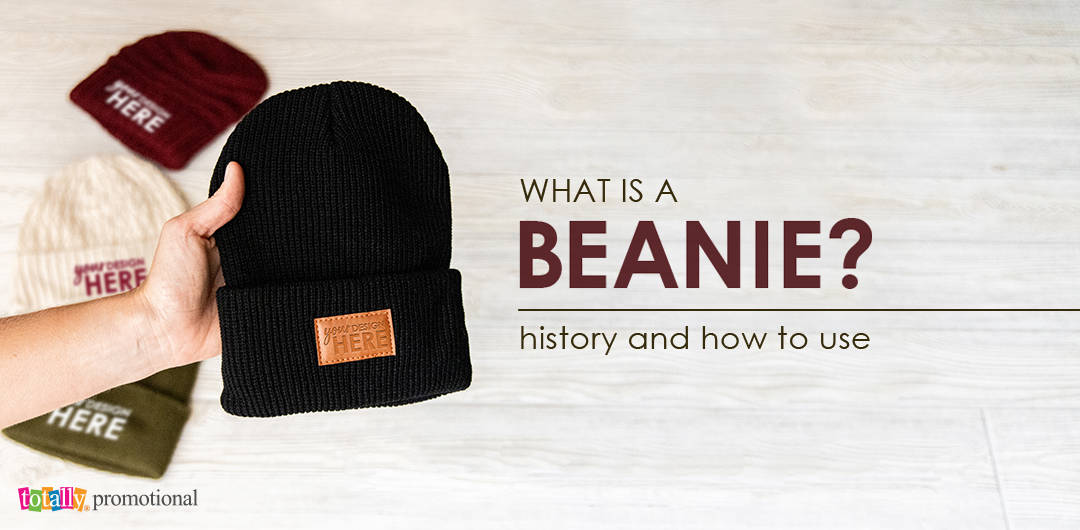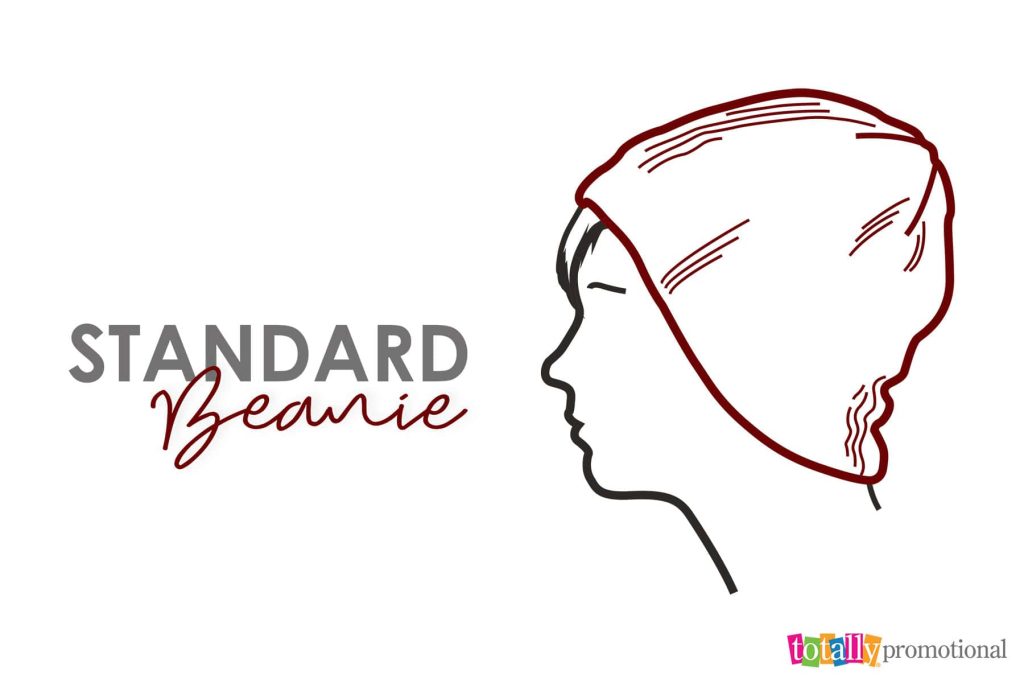Are beanies a bit of a mystery to you? You’re not alone.
Although the form-fitting hats aren’t new to the world, not everyone’s been properly introduced. Beanies have a look all their own and an interesting history. And they’re making a comeback in the fashion world!
It’s time to get educated on this versatile head covering. Customized beanies such as the popular Faux Leather Patch Acrylic Beanie with a debossed imprint are hot giveaway and gift items.
Let’s get to know the amazing beanie!
What is a beanie?
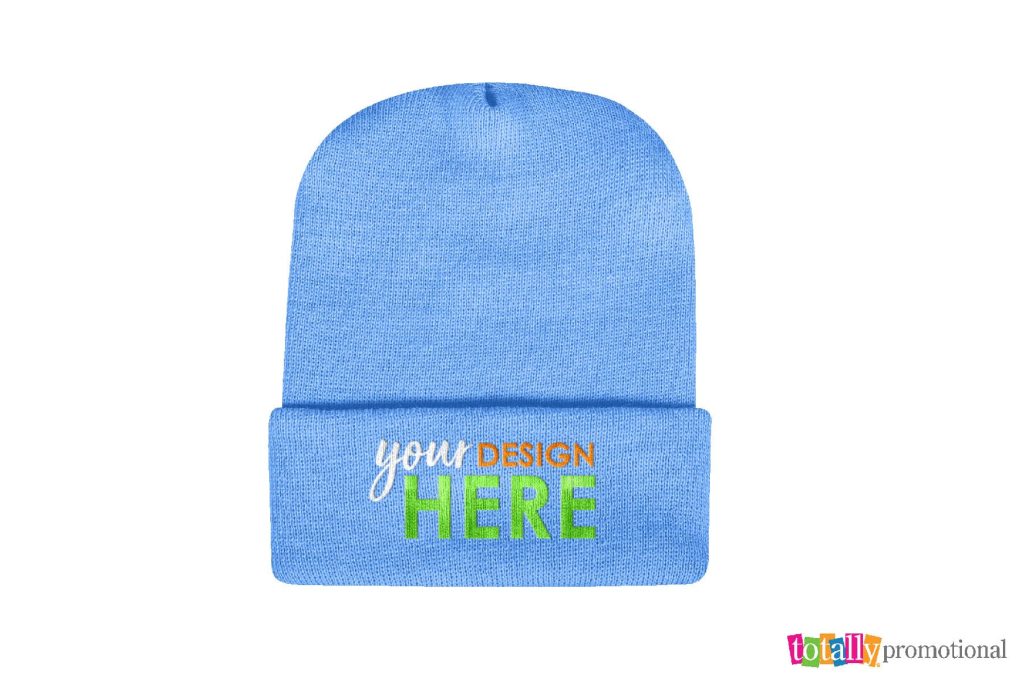
The definition of a beanie is a brimless cap that tightly fits the head. It is typically worn over the ears. Beanies can be knitted or woven, cuffed or cuffless. They’re also called skull caps, skullies, ski hats, wooly hats, knit caps and stocking caps. In earlier years, a beanie was referred to as a dinky or calot.
Beanies are most commonly worn in the winter months as a hiking accessory or while skiing or snowboarding. More than 100 years ago, beanies were mainly worn by United States workers to protect their hair and scalp from dirt and grime. Many of the first people to wear beanies were coal miners and offshore fishermen. Later, freshman beanies became a tradition at colleges and fraternities.
Today, beanies are often worn as a fashion statement. People of all ages and genders view beanies as part of their everyday attire, similar to jewelry. Since beanies are available in dozens of colors, it’s easy to match them with any type of apparel. This makes beanies an easy go-to accessory for work as well as social gatherings.
Where did the beanie get its start?
In the 1900s, adult men wore beanies as a necessity to keep their heads and ears warm when working outside. Factory workers also wore these hats to keep their hair and scalp clean while on the job. One of the reasons beanies were so popular on assembly lines was the absence of brims that could interfere with work.
Why is it called a beanie?
The word “bean” was considered American slang for “head” in the early 20th century. Apparently, some thought a bean resembled a head. When a baseball pitcher threw a pitch at a player’s head, it was called a bean ball.
Since the snug-fitting cap outlined the shape of the head, it became known as the beanie.
What are beanies made of?
The first beanies on record were made of wool to keep heads warm. Many beanies today are still made of wool. However, more popular fabrics include acrylic, cotton and cotton blends and fleece (polyester).
Some beanies are also made with Thinsulate and a fleece lining for added warmth.
How do you wear a beanie?
Most people wear a beanie cuffless and high on the forehead so it doesn’t slip off. For this style, it’s best to allow hair to hang down from the sides to frame your face and insulate your neck.
If you cuff the beanie, make sure it isn’t too tight to avoid a headache.
Different ways to wear a beanie
Standard beanie: No cuff; covers the ears for warmth.
The single-cuff beanie: The folded cuff covers part of the ears. The beanie often has a logo or other design printed on the front of the cuff.
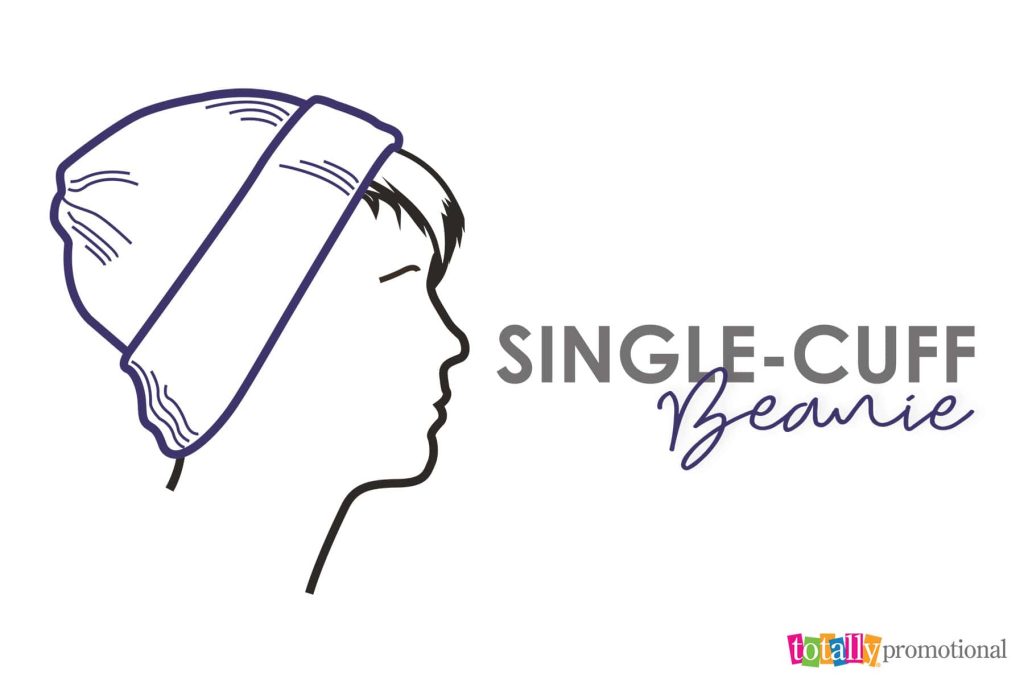
Fisherman beanie: A very hip look. The beanie is rolled or cuffed twice and positioned at the top of the head with ears exposed. Wear it back further on your head and expose your hair, or pull it forward to cover your locks.
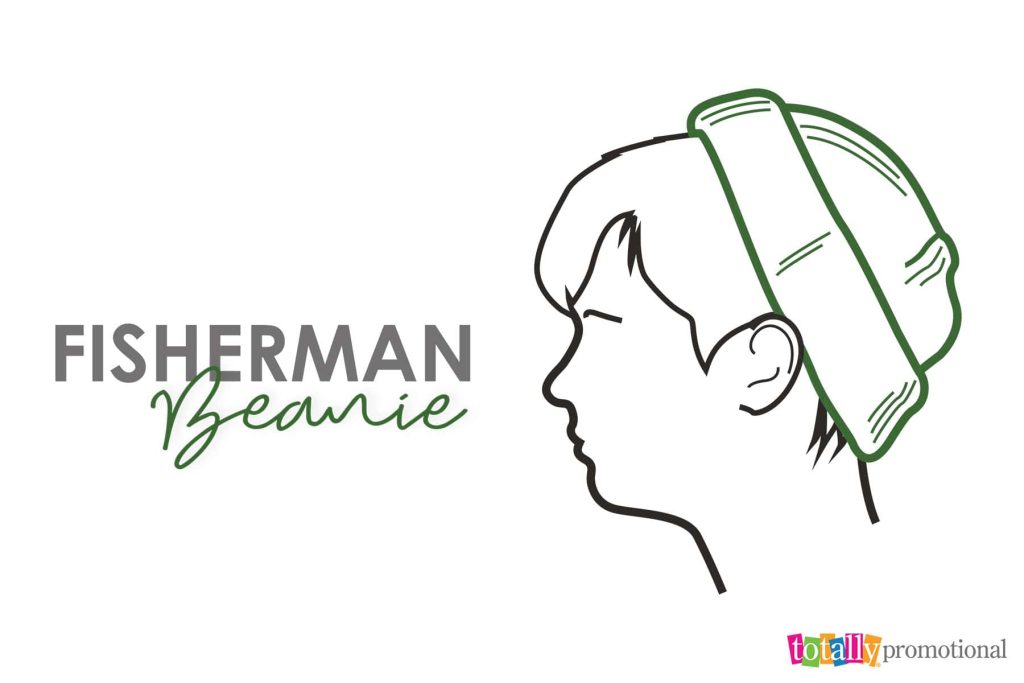
High-top/peaked beanies: Wear the beanie high on your head and above your ears. Excess beanie material should peak at the top of your head at a point, similar to an elf’s hat.
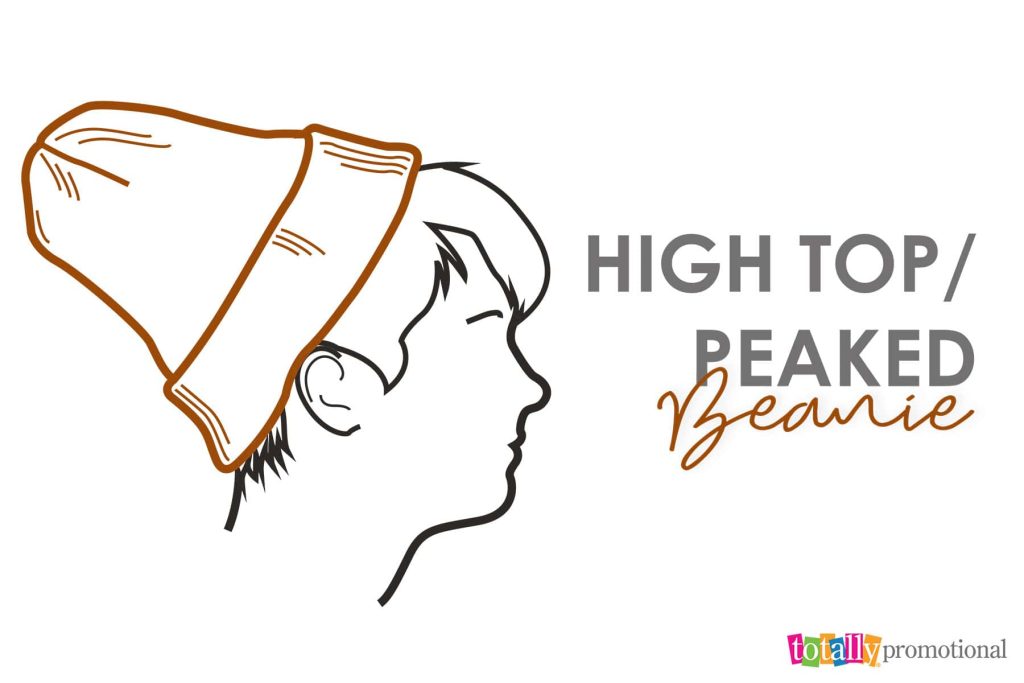
Robin Hood beanie: Create a cuff in the back only and angle it so the cuff disappears in the front.
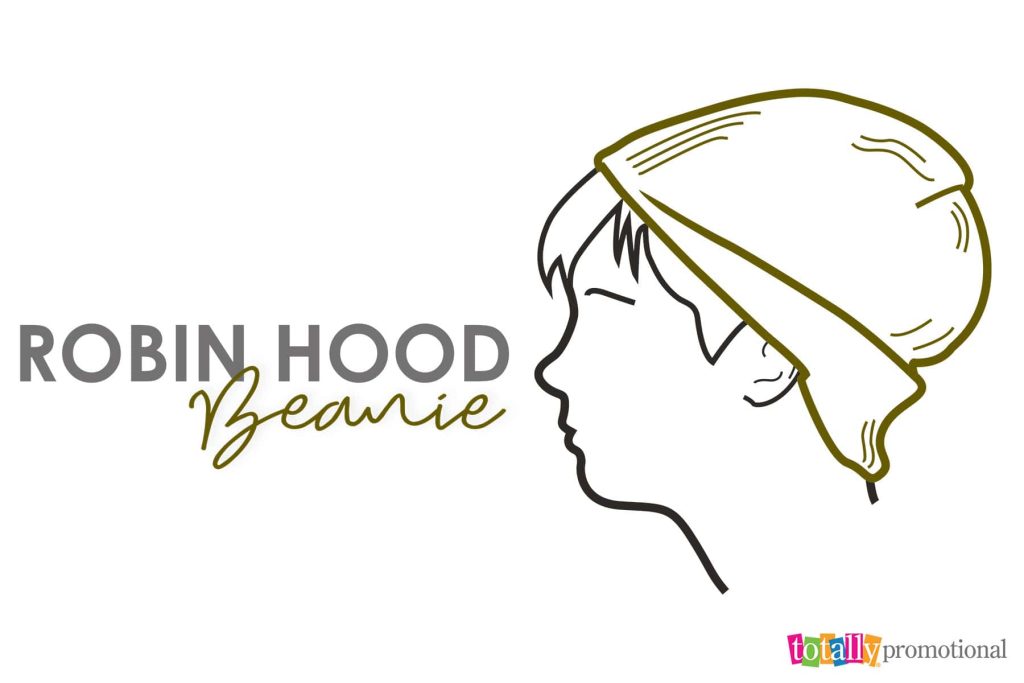
Slouchy beanie: Wear the beanie uncuffed, over the ears and as far back on your head as possible. The extra fabric should bunch behind the head. It’s OK to expose your hair in the front.
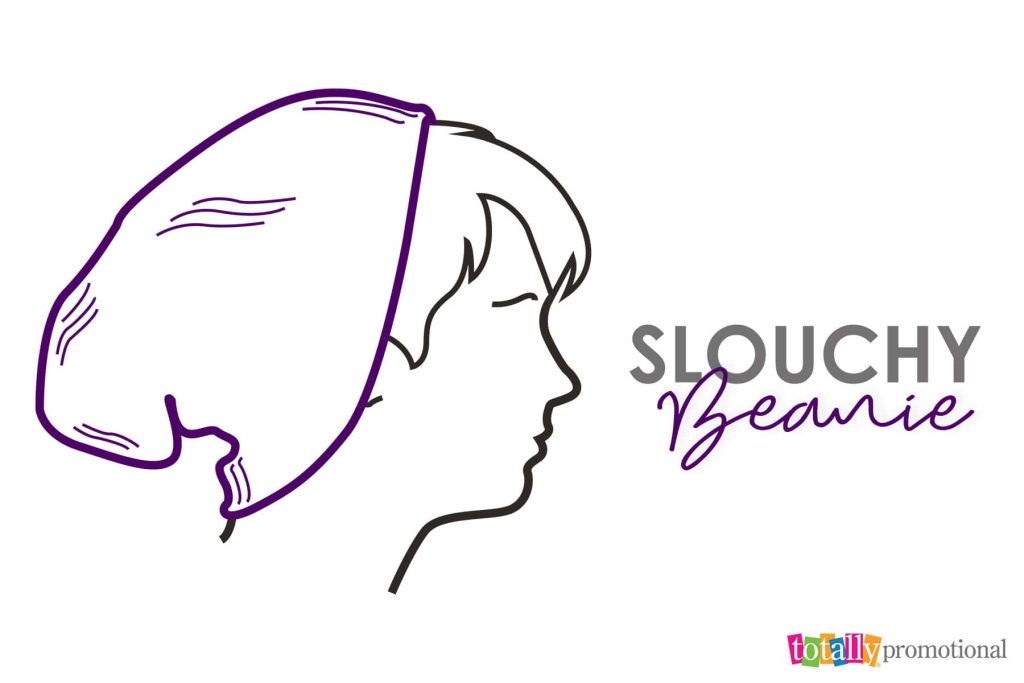
How to wear a beanie with short hair
Knit beanies work best with short hair when they’re properly positioned on the head. Let your beanie hat rest further back on your noggin to expose the top-front portion of your hair. Try slightly angling the beanie from the back so it gives your front locks the best exposure.
Got short curls? Let ’em fly! The contrast of curls and a head-shaping beanie is a fantastic look for males and females.
How to wear a beanie with long hair
Don’t try to shove long hair inside your beanie! This takes away from the sought-after smooth, snug style of a beanie. Let your hair fall naturally from the beanie to help frame your face. It’s perfectly fine to pull the beanie partly or completely over your ears.
What are the benefits of wearing a beanie?
The benefits of wearing a beanie really depend on the type and style you wear.
Beanies lined with cotton or other silky materials can protect against traction and friction alopecia. Some people wear beanies for sun protection, especially if they have thinning hair. Beanies also add style while covering bald spots.
A wool beanie can keep your head warm in the winter. A cotton beanie can absorb sweat and keep you cool in the summer months. A visor beanie can protect your eyes from the harsh rays of the sun.
Reflective Knit Cuff Beanies boost safety for outdoor activities or when working in dimly lit areas.
How to choose the right beanie for you?
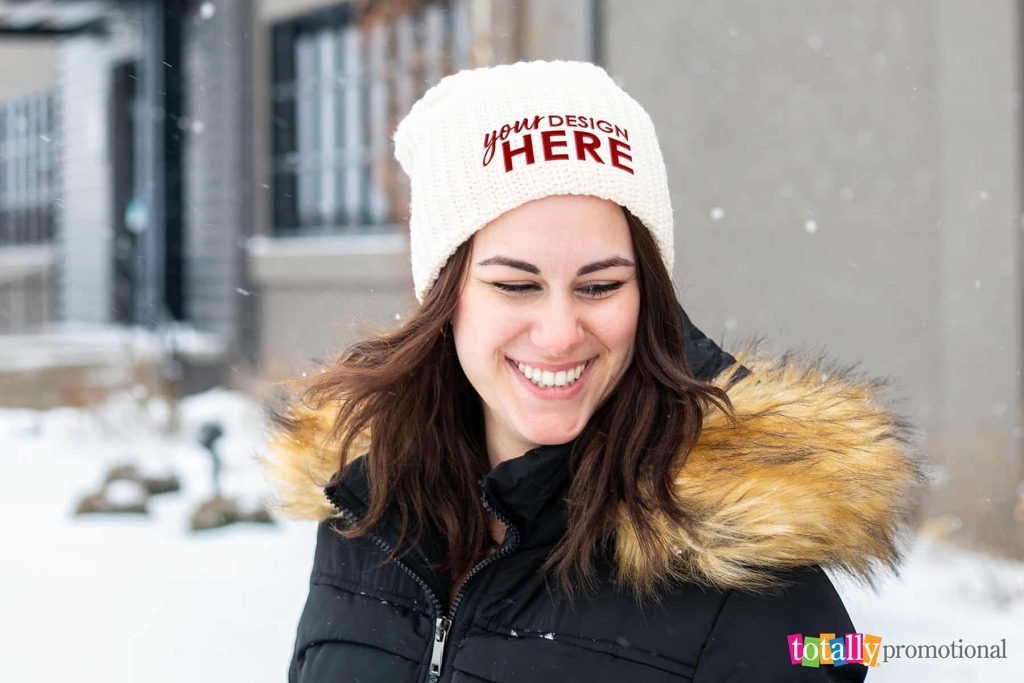
Beanies can be worn by just about anyone because of the many ways to wear them. Nearly every face and head shape looks good wearing a chunky knit beanie with a slouch style.
Beanies, in general, tend to compliment a wide forehead. A bobble hat — a beanie with a pom-pom at the top such as the embroidered Stars and Stripes Knit Cap with Pom Pom — is a good option for people with a longer face. A beanie pulled too far forward will elongate a face.
If you’re not sure what type of beanie is right for you, we advise choosing one that can be cuffed to increase your style options.
Consider selecting a beanie with a turn-back cuff in a contrasting color such as the Two-Tone Cuffed Beanie or the Rainbow Pom Beanie with Cuff. Both styles are excellent for highlighting your embroidered logo or special design.
What are some popular beanie trends?
- Ear Flap Beanies include flaps to cover your ears for extra warmth.
- Reversible Beanies can be worn two ways. They have a pattern or color on both sides for extra style options.
- Chunky-Knit Beanies, such as the embroidered Luna Pom Beanie, continue to be a hot trend due to their thick yarn, noticeable knit patterns and bulky size.
- Double-Knit Beanies are made with two separate layers of fabric knitted together.
- Cable-Knit Beanies, such as the embroidered Cici Knit Beanie, use a knitting technique that crosses the vertical stripes for a braided pattern.
- Propeller beanies have the iconic, spinning propeller blades at the top and a rainbow of colors for the cap’s panels.
How do you care for your beanie?
To prevent stretching or snagging, it’s best to hand-wash your knit cap in cool water with mild detergent.
If you prefer to clean your beanie in a washing machine, place it in a small, mesh washing bag (the type used to launder pantyhose). Select a delicate cycle and wash in cold water with mild detergent.
After washing and rinsing, allow your beanie to air dry. Certain beanie fabrics can shrink if placed in a dryer.
How to use beanies in your marketing campaign
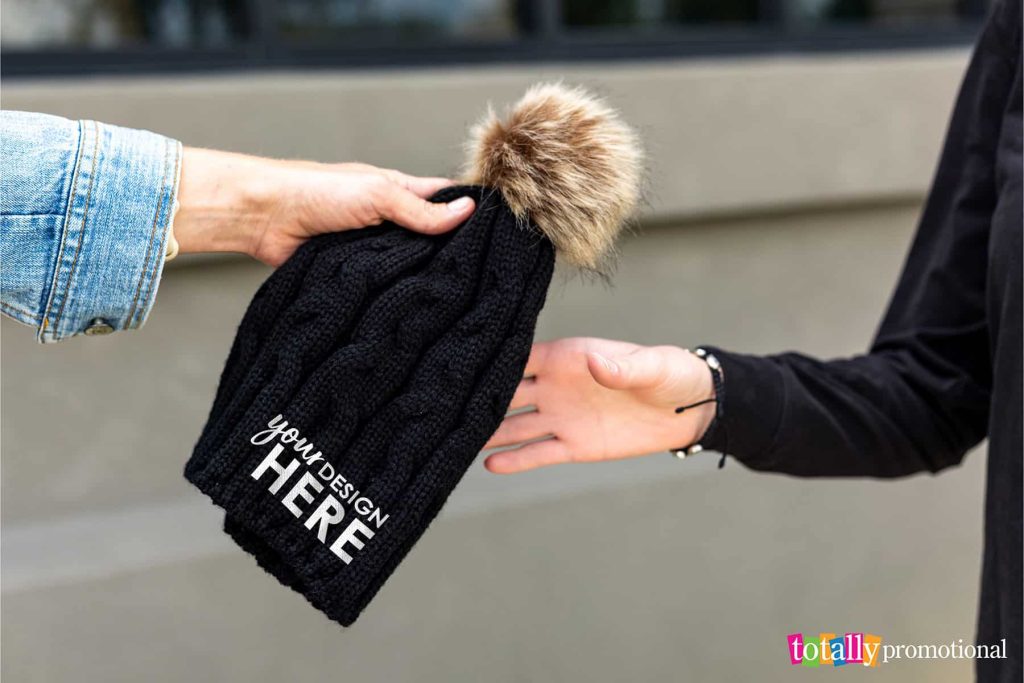
Smart marketing teams know how to capitalize on hot products. Promotional products such as the popular beanie can brand a company, raise awareness or expand college enrollment.
Here are a few ways to use custom beanies to promote your brand or cause:
- Distribute them at college fairs
- Sell them at your hospital gift shop
- Use them for a school fundraiser
- Give them away during college tours
- Use them as awards for your corporate team
- Throw them to loyal fans at sporting events
Who should be selling promotional beanies?
Beanies purchased in bulk for retail can increase profits and provide low-cost branding for numerous organizations:
- Bars and restaurants
- Ski resorts
- Theme parks
- Zoos
- Arcades
- Fundraising committees
- Airports
- Colleges
How do you personalize beanies?
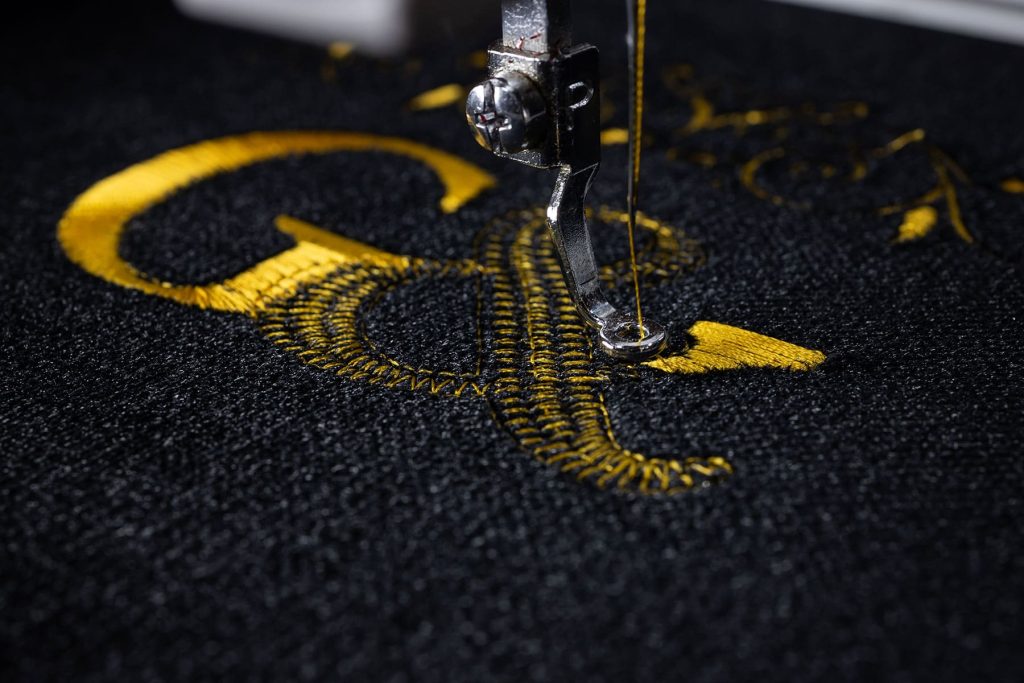
Ordering a beanie with your logo or inspirational saying is easy and fast. Choose the customized beanie you want and enter a quantity and your ZIP code. Select the product color(s), imprint location(s) and color(s).
Totally Promotional lets you decide if you want to email your logo or artwork later or upload it while you’re online. You never have to pay for your order until you approve your artwork proof.
You’ll be assigned an expertly trained rep who can help you with your artwork or any issues you may have with your order.
It’s really that simple!
Tips for ordering beanies:
- Delivery is free!
- Setup is free on most beanie styles
- Minimum orders for beanies start under 50
- Use rush production and delivery options when beanies are needed quickly
- All beanies at Totally Promotional are “one size fits most” unless specified
To sum up everything about beanies …
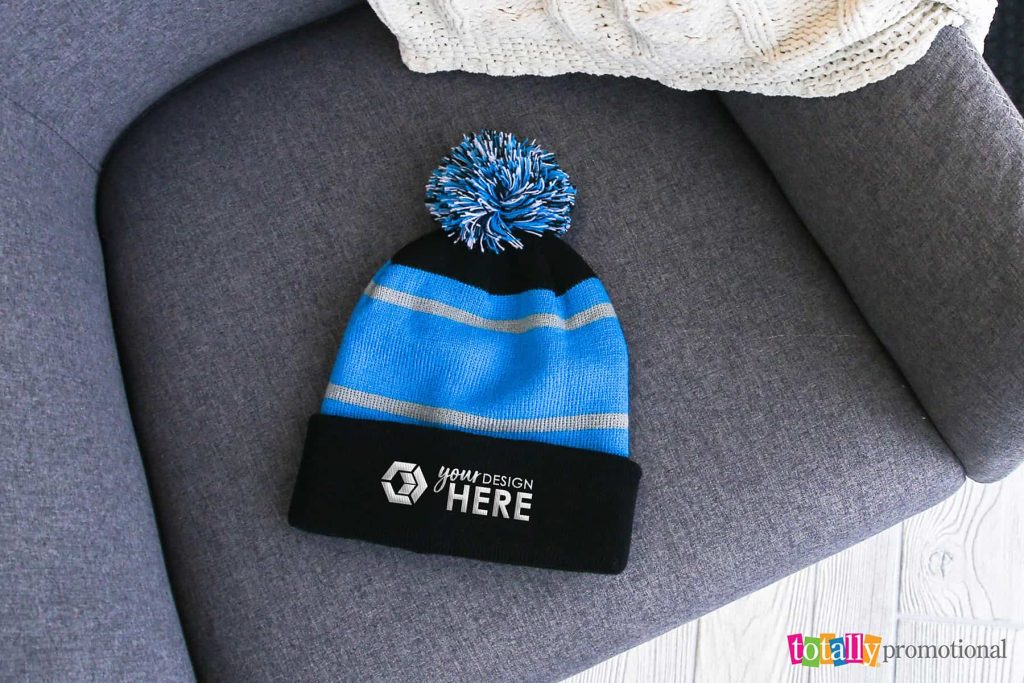
Beanies rose in popularity with workers in the early 1900s and became a hot fashion trend in recent years. The versatile beanie cap can be worn multiple ways to accommodate all hairstyles and head shapes.
As a result of this growing trend, customized beanies are a big hit at trade shows and other giveaway events. The close-fitting hats with company logos are proven effective marketing tools for businesses, healthcare, schools and many other organizations.



